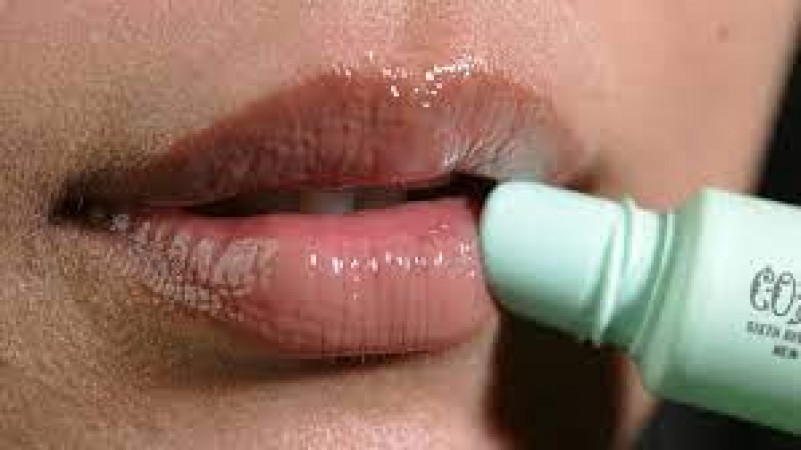
Lip care is a daily ritual for many, and whether it's cold weather causing dryness or simply wanting a pop of color, lip balm and lipstick are essential tools. But what about sharing these products with others? The act of using someone else's lip balm or lipstick can have some surprising effects on your lips. In this article, we'll explore the potential consequences and considerations of this common practice.
Sharing lip products often stems from a sense of camaraderie, trust, or the convenience of trying out a friend's new shade. When your friend has that perfect lipstick shade that you've been eyeing, it's tempting to give it a try. However, before you swipe, it's essential to understand the implications.
While sharing lip products is a common occurrence, it raises concerns about hygiene, particularly in the context of personal items applied to the lips. In this section, we will delve deeper into the hygiene concerns and the potential risks they pose.
One of the most significant risks associated with sharing lip balm or lipstick is the transmission of infections. The lips are a gateway to the body, making it easier for viruses and bacteria to enter. When you use a lip product that someone else has applied, you are essentially coming into contact with their bodily fluids, which can carry infections.
Cold sores, also known as fever blisters, are highly contagious, and they can be transmitted through lip contact. Sharing lip products increases the risk of contracting or spreading the herpes virus. Herpes simplex virus (HSV) is the culprit behind cold sores, and it can be easily transferred through the exchange of lip balm or lipstick.
Bacterial infections can result from sharing lip products as well. Harmful bacteria can thrive on lip balm or lipstick, leading to skin issues and discomfort. Some common bacteria that can pose a risk include Staphylococcus and Streptococcus. These bacteria can lead to skin infections, such as impetigo or cellulitis, and may even affect your overall health.
Lip products contain various ingredients that can trigger allergic reactions, especially if you're not aware of what's in the product you're sharing. Some common allergens found in lip products include fragrances, preservatives, and certain dyes. When you use someone else's lip balm or lipstick, you may unknowingly expose yourself to these allergens, which can lead to uncomfortable reactions.
Sharing lip balm or lipstick can lead to itching, swelling, and irritation, which can be uncomfortable and unsightly. Allergic reactions can manifest in various ways, and these symptoms can range from mild to severe. It's crucial to be aware of the signs of an allergic reaction and seek medical attention if they become severe.
Continual sharing of lip products can result in long-term dryness and chapping. This occurs because the lips are sensitive, and exposing them to different lip products and the microbes from other people's lips can disrupt their natural moisture balance. Dry and chapped lips can lead to painful cracks and discomfort.
Over time, your lip health may change due to sharing lip products, potentially requiring more extensive care and treatment. Chronic exposure to foreign substances and potential allergens can alter the condition of your lips. You may find yourself needing more aggressive lip care, such as specialized balms and treatments, to maintain their health.
To minimize risks, it's advisable to use your own lip balm and lipstick exclusively. Your lips are a delicate part of your body, and keeping your lip products for personal use only can significantly reduce the chances of infection, allergic reactions, and long-term issues.
If sharing is unavoidable, consider using disposable applicators to apply the product. Disposable lip brushes or cotton swabs can help you avoid direct contact with the lip product. This minimizes the risk of infection and allergic reactions.
Regularly clean and sanitize your lip products to reduce the risk of bacterial contamination. While it may not eliminate all risks, maintaining clean and hygienic lip products can go a long way in preventing bacterial infections.
Know the ingredients in your lip products to prevent allergic reactions and choose products with natural, hypoallergenic ingredients. Being aware of what you're applying to your lips can help you make informed decisions and protect your lip health. Sharing lip balm or lipstick with friends might seem harmless, but it carries potential risks, from infections and allergic reactions to long-term lip health issues. While the temptation to try out a new shade or share in the spirit of friendship is understandable, it's essential to prioritize your lip health. Taking simple precautions and staying informed about your lip products can help you enjoy beautiful, healthy lips without the unwanted consequences of sharing. Your lips deserve the best care, and that means being mindful of the products you use and share.
Solution of Pollution? Delhi Closes Schools till 10 November as Air Becomes Poisonous !
Do wounds occur again and again on the nose? Know from health expert what is the way to avoid this
Keep doing these yoga to avoid air pollution, many problems related to breathing will go away